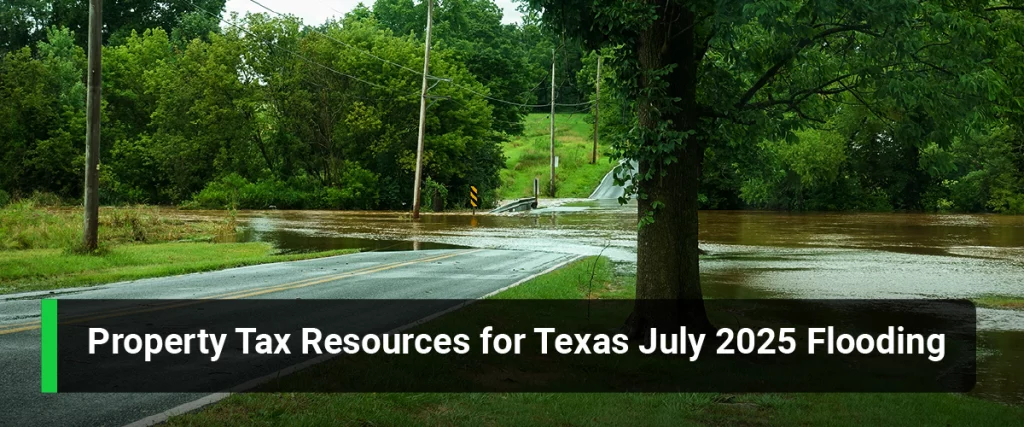From July 4-13, 2025, major flooding took place and affected many counties in Texas, including Kerr, Travis, Kendall, Burnet, and several more. The flood mostly took place in the Hill Country and Central Texas, causing widespread damage to many homes and commercial properties. Due to the flood, homes and businesses were destroyed or severely damaged, leaving many people stuck in a dire financial situation. However, there are resources and actions property owners can take to recover from the flood without further implications.
The July flooding has caused major consequences for property owners, including structural repairs to their property, which can lead to financial strain. If damaged properties are taxed based on pre-flood appraised values, this can lead to inflated and inaccurate taxes, unless exemptions are filed. Exemptions are an excellent way to help reduce property tax burden in times of a disaster.

What is the Temporary Disaster Exemption?
Texas law allows a portion of a property’s structural damage to be exempted from property tax when at least 15% of buildings, improvements, and qualifying personal property is damaged by a disaster. The Temporary Disaster Exemption is a special property tax relief provision in Texas that allows property owners to receive a temporary reduction in their property’s appraised value. The exemption can be used for residential, commercial, industrial, or business property.
The Temporary Disaster Exemption offers tax relief without having to wait until the next year because the exemption can reduce your 2025 property tax burden, offering much needed support if you’re already facing costs of unexpected repairs. It helps ensure taxes are based on what your property is actually worth after the disaster, rather than before.
Damage Levels and Exemptions
| Damage Assessment | Damage Range | Temporary Exemption |
|---|---|---|
| Level 1 | 15-30% | 15% |
| Level 2 | 30-60% | 30% |
| Level 3 | 60-100% | 60% |
| Level 4 | 100% | 100% |
*Savings will depend on actual damage, timing, and the county’s tax rate.
Time-Sensitive Opportunity
To apply for the exemption, property owners must file a Form 50-312 Temporary Exemption Property Damaged by Disaster with the county appraisal district within 105 days of the disaster declaration; considering the floods, it would be around mid-October 2025.
At O’Connor, we will work to ensure that the damage done to your property due to the flood qualifies for the exemption and gather evidence like repair estimates, insurance assessments, and photos to support your case. We have decades of experience of dealing with inflated or unfair assessment errors and disasters, like the 2025 July flooding. Being rooted in Texas, O’Connor has local expertise and is familiar with local appraisal districts, regional disaster declarations, and flood-impacted counties.
We have an online temporary disaster exemption calculator that can help you pre-determine if your property qualifies or is eligible for the exemption. To use our calculator, input information such as the market value of your property, cost of damages, exemption percentage, date of disaster, and other factors. The calculator simply estimates how much the exception could help you save, but the real action is in filing the correct form on time.

How to Apply Step-by-Step
- Confirm that your property is in a state of disaster declaration.
- Take photos of the damage done to your property. To best support your claim, take photos from different angles, including the entire structure, and close pictures of the damage.
- Collect estimates of damage repairs and receipts for completed repair costs on the property that you are applying for. These documents will further support your claim and determine the potential exemption amount.
- Using O’Connor’s temporary disaster exemption calculator and the supporting documentation, you will be able to estimate potential exemption savings.
- Complete form 50-312 Temporary Exemption Property Damaged by Disaster.
- Make sure to file the form and any supporting documentation with the county appraisal district based on where your property is located. The application must be submitted within 105 days of the disaster declaration.
If your property does not qualify for the exemption, our top property tax consultants can help you file a formal property tax protest for a fighting chance at a reduction. Our team will review your appraisal and challenge the inflated values, ultimately for the greatest reduction possible. Our licensed professionals and appraisers will represent you at hearings before the Appraisal Review Board (ARB).

